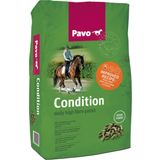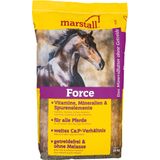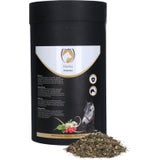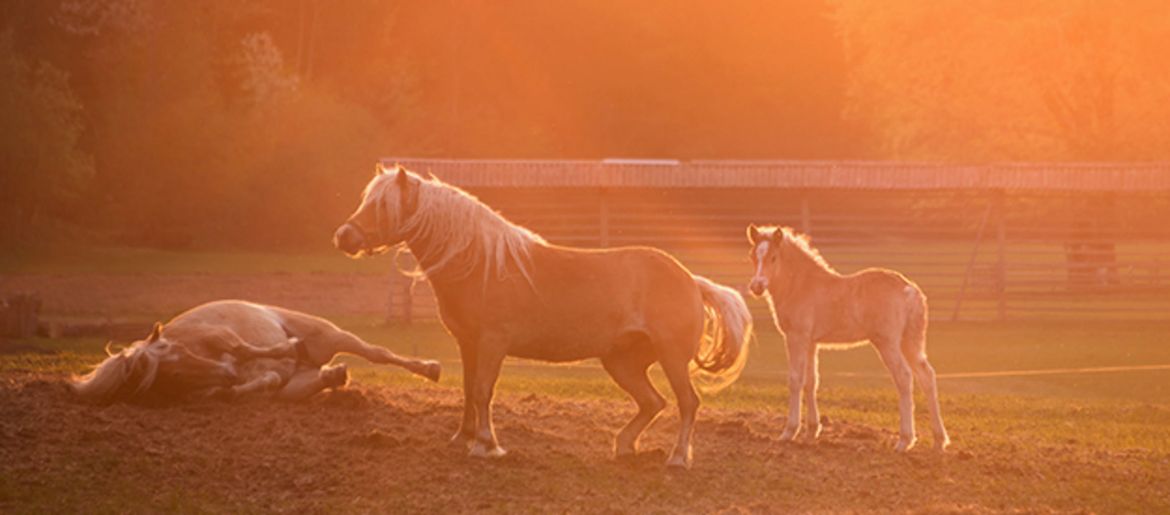Start Spring on the Right Foot
As the days start to get longer and temperatures begin to rise, spring is just around the bend! This also means that your horses can begin grazing again and will start to change their coats. It's important to take the right precautions to avoid colic, diarrhea or even laminitis during this time.
Warning: improper grazing can be dangerous
Horses' bodies take a while to adjust to new conditions. When they start to graze they often transition from a low-fibre and low-protein diet to a low-fibre but high-protein diet, which can cause intestinal problems.
Horses need different types of bacteria to digest different types of feed. If they start to eat too much of one type of feed, they can get diarrhoea or colic or even laminitis.
Making sure they are grazing properly can prevent these issues.
How to properly graze
The most important thing is not to tackle grazing too quickly. Slowly introduce grazing over a period of four weeks. No matter how warm and beautiful it is outside, think about your horse's health first and take things slow.
For the first week, spending fifteen minutes a day in the pasture is enough. During the second week, you can extend your horse's grazing time to half an hour. Over week three, extend grazing time to an hour and from then on you can increase their grazing time continuously but slowly.
A good tip is to provide your horse with hay before it goes out to the pasture. This slows down their appetite for grass and also supplies them with important crude fibre.
Should you keep giving them supplementary feed?
Basically, pasture grass is very nutritious and provides a lot of energy. So if you give your horse additional feed, you should adjust the amount of nutrients and energy accordingly. For example, use a concentrate that does not provide too much energy.
Additional feed that encourages good digestion can definitely still be used. This helps your horse to adapt to their new diet.
When grazing, always make sure that your horse gets enough minerals. Soil these days tends to be low in nutrients, which could cause health issues if your horse does not get the nutrients it needs from grazing.
How can you support a changing coat?
As we all know, it's impossible to prevent shedding. That's why it's important to support your horse as much as you can while it is changing its coat. Nutrition is very important during this time as your horse can only lose its coat in a healthy way when it has enough nutrients. If these nutrients are not available to a sufficient extent, the change of fur may be delayed or the likelihood of developing an illness will increase because the horse's body is working too hard.
Essential amino acids are particularly important during a change in coat, because they are needed to grow new hair. In addition, you should ensure that you horse has an adequate supply of selenium, zinc, copper, vitamins A, E and all B vitamins using a mineral feed.
An adequate protein supply is also important, particularly if your horse eats low-protein hay.
It is also recommended to feed your horse linseed oil as it contains many polyunsaturated fatty acids that ensure a shiny coat and stimulate digestion.
Latest reviews
-
 € 28,99 (€ 1,45 / kg)
€ 28,99 (€ 1,45 / kg)Delivery by January 07
-
 4.8 (17)
4.8 (17)Marstall Force, 20 kg
- Minerals, trace elements, vitamins
- A high Ca:P proportion
- For all horses
€ 66,99 (€ 3,35 / kg)Delivery by January 16
-
 € 12,92 € 13,69 (€ 64,60 / l)
€ 12,92 € 13,69 (€ 64,60 / l)Delivery by January 07
-
 5.0 (1)
5.0 (1)Excellent Horse Wintermix, 1 kg
- Including rosehip, thyme & chamomile flowers
- To support metabolism & digestion
- Easy to dose
€ 29,99 (€ 29,99 / kg)Delivery by January 07
